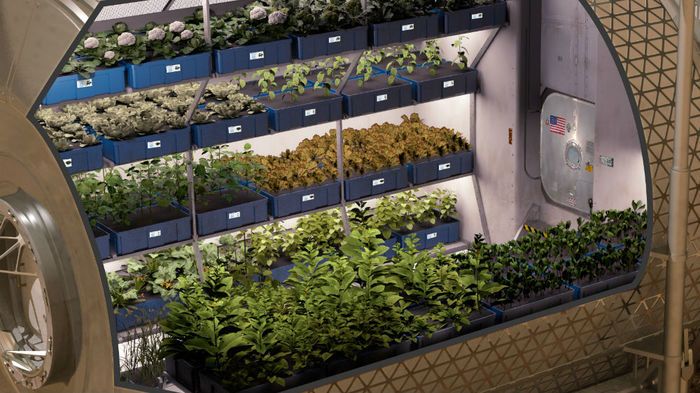
Space is beautiful, with many things yet unknown. The National Aeronautics and Space Administration (NASA) recently published footage of two tomatoes that were lost in space after being picked aboard the International Space Station (ISS) last year. “Despite being nearly a year after the initial disappearance of the tomatoes, the fruit was found in a plastic bag dehydrated and slightly squished,” NASA officials stated in a December 14 report. Other than slight discolouration, the tomatoes had no evident microbial or fungal development, according to the officials. Because astronauts are continually exploring space, how well they are fed is a crucial consideration.
Veggie, is a space garden that resides aboard the International Space Station, according to NASA’s website
For years, astronauts have received monthly shipments of freeze-dried and prepared meals to meet their dietary requirements. However, when astronauts spend months or even years in orbit, the vitamins in packed form degrade over time, affecting their health, according to NASA. In such instances, the availability of fresh fruits and vegetables is critical. The Vegetable Production System, often known as Veggie, is a space garden that resides aboard the International Space Station, according to NASA’s website. “Veggie’s purpose is to help NASA study plant growth in microgravity while adding fresh food to the astronauts’ diet and enhancing happiness and well-being on the orbiting laboratory,” the agency said in a statement.
The garden made by the project is about the size of a carry-on piece of luggage and typically holds six plants. Each plant grows in a “pillow” filled with a clay-based growth media and fertilizer. “The pillows are important to help distribute water, nutrients and air in a healthy balance around the roots. Otherwise, the roots would either drown in water or be engulfed by air because of the way fluids in space tend to form bubbles,” as per NASA.
The Veggie project has cultivated a variety of plants, including three types of lettuce, red Russian kale, and zinnia flowers
Because there is no gravity in space, plants must rely on other environmental elements such as light to orient and guide their growth. LEDs installed above the plants inside the space station create a spectrum of light that is suitable for plant growth. “Since plants reflect a lot of green light and use more red and blue wavelengths, the Veggie chamber typically glows magenta pink,” according to the website. The Veggie project has cultivated a variety of plants, including three types of lettuce, Chinese cabbage, mizuna mustard, red Russian kale, and zinnia flowers, according to NASA. Some of these plants were collected and consumed by the crew, while the remainder were returned to Earth for analysis.
One major source of concern, according to NASA, was hazardous microorganisms growing on vegetables. So yet, no hazardous contamination has been discovered. In the future, the space agency plans to cultivate more produce, such as tomatoes and peppers. “Foods like berries, certain beans, and other antioxidant-rich foods would have the added benefit of providing some space radiation protection for crew members who eat them,” according to the report.
When a harvest is ready for research, the ISS crew takes plant samples and returns them to Earth for analysis
There is another plant research growth room aboard the ISS, similar to Veggie. The Advanced Plant Habitat (APH) chamber delivers water, nutrients, and oxygen to the plant roots using LED lighting and a porous clay substrate with controlled-release fertilizer. Unlike Veggie, however, it is contained and mechanized, with cameras and over 180 sensors in constant interactive contact with staff on the ground at the Kennedy Space Center.
When a harvest is ready for research, the ISS crew takes plant samples and returns them to Earth for analysis so scientists may better understand how space influenced their growth and development. NASA also stated that its Plant Habitat-04 (PH-04) experiment grew Hatch Chile peppers aboard the International Space Station. The astronauts would eat part of the peppers and send the remainder back to Earth for analysis, according to the experiment.
According to the space agency, this plant experiment will be one of the most challenging to date on the station due to the long germination and growing timeframes. With a Scoville Heat Unit value of 2,000-4,000, the Hatch Chile pepper is considered a medium-heat pepper. Growing methods and environmental variables can influence the rating.
Why should peppers be grown in space? According to NASA, peppers contain several important elements and are a good source of Vitamin C. The plants are also tough and have a strong chance of thriving in microgravity. “They are easy to handle in microgravity and are a pick-and-eat crop that does not require cooking or complex processing. The fruit also has low microbial levels, so they are safe for astronauts to consume,” NASA added.
